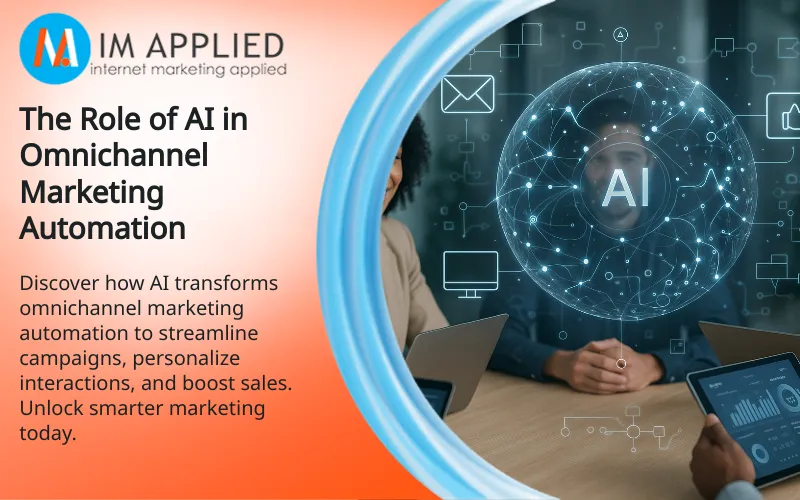Want to Skyrocket Sales? Start Scoring Leads with AI
Karl Marais | 9 May 2025
Still ranking your leads based on job titles, email clicks, or a gut feeling? That’s not lead scoring—it’s lead guessing.
And it’s costing you time, money, and conversions.
AI-powered lead scoring flips the script. It uses real-time behavioral data and machine learning to surface your best leads before your competitors even notice them.
No more guesswork. Just smarter selling.
Key Takeaways
- AI brings consistency and eliminates bias from your lead qualification process.
- Predictive insights help you act early, reaching leads before they slip through the cracks.
- Real-time scoring keeps your sales team focused on what matters right now.
- CRM and marketing tool integration create a unified sales system.
- Higher conversion rates come from better timing and tailored outreach.
What Is AI-Powered Lead Scoring?
AI lead scoring is a system that uses machine learning to evaluate which leads are most likely to convert.
Instead of relying on fixed rules or manual input, it adapts as your leads engage across channels.
Picture a smart GPS that reroutes you based on traffic in real time. Traditional lead scoring is the paper map.
AI lead scoring is like a GPS—it gets you where you need to go faster and more efficiently.
As your leads interact with your brand, AI watches, learns, and recalibrates, delivering scores that are always up to date.
Why Traditional Lead Scoring Falls Short
Manual systems rely on simple if-this-then-that logic: “If the lead downloaded a whitepaper, add 5 points.”
It’s static, inflexible, and disconnected from real-world buying behavior.
Worse, it assumes every lead follows the same journey.
But what if one lead visits your product page ten times, while another fills out a form and never returns? Which one is actually interested?
Only AI can see beyond the surface by identifying behavior patterns and adapting scores in real time—something no spreadsheet or rules-based system can do.
How AI Lead Scoring Works
An AI scoring system pulls from a wide range of data points, such as:
- Firmographics: Industry, company size, and revenue
- Demographics: Title, seniority, and region
- Behavioral data: Website activity, email engagement, ad clicks
- Intent signals: Repeated visits, pricing page views, downloads
From there, it looks for patterns that resemble past high-converting leads.
As more data comes in, it learns what works and gets smarter, improving scoring precision over time.
Unlike traditional systems, AI doesn’t need to be told which behaviors matter. It figures that out itself.
Real-Time Lead Scoring: Why Timing Is Everything
Sales is about timing. The right message, too late, is just noise.
AI lead scoring updates dynamically. If a lead suddenly engages—clicking on an email, browsing your site, watching a product video—their score increases in real time.
This allows your reps to act at the peak of buyer interest, not hours or days later. Think of it like stock trading: you want to buy when the signals say “go,” not after the market closes.
This is where AI shines—automating and prioritizing based on live activity, not old assumptions.
Building an AI Lead Scoring System That Works

To harness AI effectively, structure your system with intent:
1. Define Your Ideal Customer Profile (ICP)
Start with your best current customers. What industries are they in? What roles made the purchase decision? What patterns do they share?
Use these criteria to train your AI model. It’s teaching the system what “good” looks like, so it can recognize more of it.
2. Connect the Right Tools
Your CRM, marketing platform, and website analytics need to talk to each other. Without connected data, your AI is flying blind.
Ensure clean, consistent data flows from lead capture to conversion.
This improves score accuracy and allows for seamless lead handoffs between marketing and sales.
Examples of tools to connect your stack:
- CRM: HubSpot, Salesforce, Zoho CRM
- Marketing Automation: ActiveCampaign, Mailchimp, Marketo
- Analytics: Google Analytics 4, Hotjar, Mixpanel
- Integration Middleware: Zapier, Make (formerly Integromat), n8n (for more technical teams)
These tools either integrate directly or can be connected via middleware to ensure your AI model has complete visibility into lead behavior.
3. Choose a Scalable AI Platform
Not all AI tools are created equal.
Look for one that supports real-time scoring, integrates natively with your systems, and gives your team visibility into why scores were assigned.
A black box model won’t help your reps if they don’t understand or trust the results.
Transparency and flexibility matter—especially when you’re aligning AI insights with human decision-making.
Examples of scalable AI scoring tools:
- Clearbit – enriches lead profiles with firmographic data and plugs into many CRMs
- MadKudu – predictive lead scoring designed for B2B SaaS
- Salesforce Einstein – AI layer built directly into Salesforce for lead scoring and opportunity insights
- HubSpot Predictive Lead Scoring – available in their Enterprise plan for automatic qualification
- Zoho Zia – built-in AI assistant in Zoho CRM for scoring and forecasting
These tools differ in complexity and use case, but all are capable of evolving with your sales process as your data matures.
4. Train and Refine Continuously
AI learns from your data—but it still needs oversight. Review conversion data regularly and ensure scoring aligns with outcomes.
Over time, refine your ICP and retrain the model as your market evolves.
Common Pitfalls (and How to Avoid Them)
Data Privacy and Compliance
AI works best with large datasets, but that doesn’t mean ignoring regulation.
Ensure your customer data use complies with laws like GDPR or CCPA. Secure storage, transparency, and opt-in tracking are essential.
Sales-Marketing Misalignment
Even with AI, if sales and marketing don’t agree on what makes a lead valuable, the system won’t work.
Align definitions early, and review scoring rules together regularly.
Low Team Adoption
You don’t want reps ignoring scores because they don’t trust them.
Train them on what the scores mean, how they’re generated, and how to act on them. Show wins to build confidence.
The Real-World Benefits of AI Scoring
1. Higher Accuracy
AI removes human error and emotional bias. Your scores are based on patterns from actual customer behavior, not opinions, assumptions, or generic formulas.
This leads to more consistent outcomes and stronger sales forecasting.
2. Better Lead Prioritization
Your sales team can stop spinning their wheels on dead-end leads. Instead, they focus on the ones showing real buying intent.
Time is your team’s most valuable resource. AI helps them spend it wisely.
3. Higher Conversion Rates
Because your reps are engaging leads at precisely the right time, they close more deals. Buyers feel understood. Sales cycles shorten. Win rates go up.
Where AI Lead Scoring Is Headed
Smarter Behavioral Analysis
Expect more sophisticated models that pick up on subtle buying cues, like time spent on pricing pages or how often a lead shares content.
Deeper Tool Integration
The next wave of AI scoring tools will integrate more tightly with CRMs, customer support systems, product usage data, and ad platforms.
More inputs = better predictions.
Continuous Learning
As markets shift and customer behavior evolves, your scoring model will keep up, learning in real time and adjusting accordingly. No manual reconfiguration required.
Final Thoughts: Smarter Sales Start with Smarter Scoring
AI-powered lead scoring isn’t just another tool—it’s a new mindset. It puts real-time, data-backed decision-making at the center of your sales process.
Instead of chasing every lead, your team focuses on the ones already raising their hand.
You move faster. Convert more. Waste less.
Ready to Take the Guesswork Out of Sales?
If your sales process still relies on intuition, it’s time to modernize.
- Define your ideal customer.
- Connect your data tools.
- Choose an AI platform that scales with you.
- Train your team to act on smarter signals.
You don’t need to overhaul everything at once. Start small, optimize, and grow into it.




